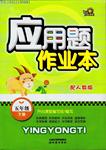题目内容
All our dreams have something to do with our feelings, fears, longings, wishes, needs and memories. But something on the “outside” may affect what we ___41___. If a person is hungry or tired or cold, his dream may include a feeling of this kind. If the ___42___ on your body has slipped off your bed, you may dream that you are ___43___ or resting on the ice and snow. The material for the dream you will ___44___ tonight is probably to come from the experiences you have today.
___45___ the subject of your dream usually comes from something (feeling of cold, a noise, a discomfort, etc.) that has an effect on you ___46___ you are sleeping and it may also use your past experiences and the wishes and interests you have now. This is ___47___ very young children are likely to dream of fairies(仙女), older children of school examinations, ___48___ people of food, homesick soldiers of their families and prisoners of freedom.
To show you how that is ___49___ while you are asleep and how your wishes or needs can all be joined together in a dream, ___50___ is the story of an experiment. A man was asleep and the back of his ___51___ was rubbed ___52___ a piece of cotton. He would dream that he ___53___ in a hospital and his girlfriend was visiting him, ___54___ on the bed and feeling gently his hand!
There are some scientists who have made a special ___55___ of why we dream, what we dream and what those dreams ___56___. Their explanation of dreams, though a bit reasonable, is not accepted by everyone, but it ___57___ an interesting approach to the problem. They believe that dreams are ___58___ expressions of wishes that didn’t ___59___. In other words, a dream is a way of having your wishes ___60___ out.
41. A. want B. dream C. think D. wish
42. A. blanket B. book C. cap D. trousers
43. A. working B. running C. sleeping D. studying
44. A. have B. meet C. see D. think
45. A. But B. For C. Because D. So
46. A. before B. while C. after D. during
47. A. why B. because C. how D. what
48. A. happy B. sad C. hungry D. old
49. A. taking B. happening C. dreaming D. carrying
50. A. that B. it C. here D. this
51. A. leg B. head C. body D. hand
52. A. in B. of C. with D. off
53. A. left B. lived C. studied D. was
54. A. waiting B. sitting C. smiling D. speaking
55. A. study B. watch C. observation D. way
56. A. stand B. do C. form D. mean
57. A. makes B. offers C. finds D. demands
58. A. any B. almost C. mostly D. hardly
59. A. get B. arrive C. come true D. believe in
60. A. carried B. taken C. kept D. called
BACAD BACBC DCDBA DBCCB

 应用题作业本系列答案
应用题作业本系列答案Butter is bad for you—so is margarine(人造黄油).Coffee raises blood pressure, but may protect against cancer.Alcohol is okay, but only if it's wine.The confusing studies on what is safe to eat and drink are enough to make it impossible for anyone to understand what "good food" is.
Take the margarine-butter debate for example.Studies that linked fat—found mostly in animal products such as meat and butter—with cancer and heart disease sent millions rushing to buy margarine.But then another study found that people who ate a lot of margarine also had high levels of heart disease.For those who have a firm faith in science, this seems to be the end of the world.
But many doctors point out that their advice has never been conflicting.For years, and in various countries, they have recommended eating less fat.
People in western countries such as Britain and the United States get about 40 percent of their calories from fat.Doctors say this should be around 30 or even 25 percent,
"We must try to reduce total fat," said Dr.Robert Richardson of the University of Edinburgh, who has been studying the effects of fat on human health for years.
"We need to go to more such food as bread, in particular brown bread, and more fruit and vegetables."
Fresh produce may not be so safe, either.Last month the British Government advised consumers to peel their pears before eating, while many Americans briefly avoided apples because of fears over an insect killing chemical.
But Dr.Arnold, a British scientist, said any risk of such poisoning would be outweighed by the costs of not eating plant foods.
"On balance, if you were to put both risks against each other, the advice has to be eating as much fruit and vegetable daily as possible," she said.
In general, doctors conclude, variety truly is the best policy."The general advice is pretty much the same advice that doctors have been talking about for a long time—a varied diet, a mixture of foods and not too much of any one," Arnold said.
【小题1】In which section of the magazine are you most likely to find this passage?
| A.Arts and Culture | B.Entertainment |
| C.Nature | D.Health |
| A.it found that there were insects on the pears |
| B.it wanted consumers to avoid insect, killing chemicals |
| C.the skin of pears was found to be bad for people's health |
| D.it was a bad habit not to peel them |
| A.to be heavier than usual or allowed | B.to be more dangerous than |
| C.to be greater in value or importance than | D.to be considered less important than |
| A.Many doctors say that their advice has never been conflicting. |
| B.Science provides answers to all our questions. |
| C.We should peel our pears before eating. |
| D.We should eat plant foods despite the risk of poisoning. |